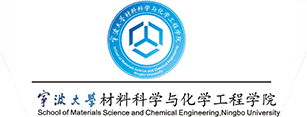History
The history of the School of Materials Science and Chemical Engineering can be traced back to the Biochemistry Department established in 1956 in Ningbo Normal College (later became the Department of Chemistry of Ningbo Normal College); the Department of Chemistry of Ningbo University was established in October 1996 during the merger of the three schools; the College of Science of Ningbo University was established in May 2000 by merging with the majors of Mathematics and Physics to form the Department of Chemistry; in December 2005, the Department of Chemistry was separated from the College of Science to form the Department of Chemistry. In December 2005, the Department of Chemistry became independent from the Faculty of Science and established the School of Materials Science and Chemical Engineering, which was relocated to the North Campus of Ningbo University in 2021, with two teaching and research buildings in the North and South Buildings of Yifu Materials and Chemistry.
Departments and Academic Platforms
There are three basic teaching organizations, namely, Department of Chemistry, Department of Materials Science and Engineering, Department of Chemical Engineering and Technology, and six research institutes, namely, Institute of Pharmaceutical and Biological Research, Institute of Energy Materials and Industrial Catalysis, Institute of Inorganic Materials, Institute of Polymer Materials, Institute of Advanced Separation and Catalytic Materials, and Institute of Mass Spectrometry Technology and Application.
There are 3 undergraduate majors, 1 first-level academic master's degree, 1 professional degree master's degree, and 1 second-level doctoral degree; 2 disciplines of Chemistry and Materials Science are in the top 1% of ESI rankings; Materials Science and Engineering is a key first-level discipline of the province; Materials Science and Engineering is a key discipline of the city; Chemistry is a key discipline of the city; and Chemistry and Materials Science and Engineering are the first-class undergraduate majors of the country. Chemistry and Materials Science and Engineering are both national first-class undergraduate program construction points. The college also has the cultivation base of the State Key Laboratory of New Functional Materials and Their Preparation Science, the Key Laboratory of Advanced Mass Spectrometry Technology and Molecular Detection of Zhejiang Province, and the Experimental Teaching Demonstration Center of Zhejiang Province, which are jointly constructed by the Ministry of Science and Technology of the People's Republic of China. It mainly carries out personnel training, scientific research and social service in the fields of materials science, chemical engineering and chemistry.
Faculty
There are 1697 students, including 554 undergraduates and 1143 graduate students. There are 152 faculty members, including 121 full-time faculty/full-time research faculty. There are 54 full-time senior titles and 44 associate senior titles. The proportion of teachers with doctoral degrees reaches 100%, and there are 27 doctoral supervisors. There are 4 national talents and 20 provincial and ministerial talents.
Scientific Research Achievements
From 2018-2023, the college presided over and undertook 601 projects at all levels, with a total funding of 196.57 million yuan. More than 400 invention patents have been authorized. Obtained 3 projects of the National Key Research and Development Program and 2 projects of the National Natural Science Foundation of China Joint Fund. Published more than 1,200 academic papers in authoritative academic journals and important academic conferences at home and abroad, including more than 1,000 high-quality papers; the number of high-quality papers per capita and the number of papers published in T0P journals are in the forefront of the whole university, and the high-quality papers account for about 20% of the papers of the whole university, and the invention patents are transferred for more than 130 items.
Academic Exchange
The college has extensive and close contacts and exchanges with counterparts inside and outside the university, at home and abroad, and has established good cooperative relations with many famous domestic and foreign universities and research institutes, such as California Institute of Technology, Akron University, Ningbo Institute of Materials Research of the Chinese Academy of Sciences, etc., and has carried out joint cultivation of talents and academic cooperation and exchanges in many fields. The college actively organizes large-scale international conferences and teachers actively participate in the domestic and international academic conferences in their respective fields.
Talent Cultivation
The college pays attention to the quality education and innovation ability cultivation of students, and endeavors to advocate the academic style of diligent learning and pioneering innovation. Based on the full implementation of the mentorship system, the college has built the “Blue Talent” student training system, pushed forward the cultivation of science and creativity, and strengthened the cultivation of students' practical, scientific research and organizational and management abilities. In the past three years, students have made breakthroughs in national innovation and entrepreneurship competitions. They have won 3 gold prizes, 1 silver prize and 1 bronze prize in the “Internet+” National Competition, 1 special prize, 1 first prize, 1 progressive innovation prize for basic research (only 6 nationally) and 2 second prizes in the National Competition of Extracurricular Academic Works for College Students, 1 silver prize in the National Challenge Cup Entrepreneurship Plan Competition, and 1 silver prize in various types of entrepreneurship competitions. There are more than 40 awards at provincial level, including one silver award in National Challenge Cup Entrepreneurship Program Competition. Undergraduates have published more than 110 professional papers in SCI core journals as the first author and successfully applied for more than 80 patents, which is the highest number of papers published in the university.



